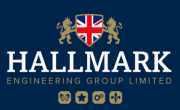How insurers are changing their annual reporting and disclosures
Most insurers wrap up their financial records at the end of each December, and come to the end of March, the world gets a glimpse into their year-long endeavors. Now is a special time in the global insurance industry.
For the first time ever, the 450 or so global IFRS insurers will be required to report their annual levels of success on a roughly comparable basis; IFRS 17. Interestingly, many single-country insurers, who could have sidestepped IFRS 17 by going local GAAP didn’t do so, and join this reporting bandwagon. This means that for the first time ever we can compare one company to another. Sort of.
There are all sorts of shenanigans that insurers get up to when reporting. Often fixated on stock prices, insurers carefully craft narratives that enhance their market standing. This is because most have listed stocks and tend to obsess about stock price over every other metric. While metrics like profitability, liabilities, and net present value play pivotal roles, regional preferences elevate measures such as embedded value in some areas while dismissing them in others. Basically, every insurer will paint a picture most beneficial to their own circumstances to boost stock price.
The spotlight on stock prices, however, narrows the audience for annual disclosures to a select group of about a dozen globally influential figures – insurance industry investment analysts. These analysts, who dictate whether insurers are perceived as buy/sell/hold, literally hold CFOs and Chief Actuaries in their financial grip. When IFRS 4 was ambiguaous, I saw analysts seek information from CFOs daily. Hopefully IFRS 17 will clean that up a bit. Its distracting trying to run a company when some outsider is constantly badgering you. This dynamic prompts a relentless pursuit of image improvement, transforming the reporting season into a high-stakes beauty parade rather than a straightforward comparison between insurers.
Under the surface of this beauty contest lies a strategic battle for attention. Insurers endeavour to present a more appealing picture than their competitors by leveraging themes that have surfaced throughout the annual close process. Forward-thinking insurers, utilizing IFRS 17 for constant or monthly management reporting, gain a head start in manoeuvring their messaging to the analysts. Conversely, those neglecting the opportunities to automate in delivering IFRS 17 find themselves scrambling to “create” the numbers late in the day.
However, the art of profit smoothing introduces a layer of nuance to this seemingly objective process. ‘Profit smoothing’ involves deferring or prematurely declaring profit and liabilities based on an insurer’s accounting and risk policies. In other words, it’s the wriggle room every insurer has in reporting what can be quite different numbers to those in the first cut. This discretionary power allows insurers to present figures that may wildly differ from the initial calculations, resulting in many iterations of the annual report left on the cutting room floor.
External auditors play a role in this process, providing their opinion on compliance with standards and regulations. If the insurer justifies the adjustments made in their report, the external auditor ensures compliance, allowing for a certain degree of flexibility in presenting the numbers.
Timing of the release date of the annual report is also important in the quest for maximizing stock value. Insurers strategically manipulate the timing of their reports. Be the first to report amongst your peers, then you set the market expectations that your opposition has to live up to. The Board of the insurer also appears to look more organised and productive than its competitors. An early declaration sets the tone for the market. Competitors can be drawn into trying to compete declare profitability at the cost of reserving in their future, meaning these laggards ultimately have to sell less aggressive products in following years. If an insurer is the last to report and it gets a chance of eclipsing the opposition’s results. Of course, being the last to report always runs the risk of making an insurer look like it does not know what it’s doing. We all know what we are doing, right?








